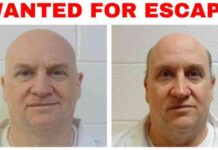Birmingham’s New Street: The Epicenter of Crime in England and Wales
The hustle and bustle of Birmingham’s New Street may seem like a vibrant hub of activity, but beneath its surface lies a darker reality. A recent analysis by MailOnline has revealed that this neighborhood in Ladywood, an inner-city district known for its main transport hub, is the most crime-ridden area in all of England and Wales. Shockingly, nearly five individuals within this tiny zone face the horrors of being attacked, raped, or sexually assaulted every single day, based on data from 2024.
In a time when Britain is grappling with a surge in criminal activities, the need for a closer look at these statistics has never been more pressing. With over 2.2 million violent or sexual crimes reported to authorities across England and Wales in the previous year, the grim reality of the situation is undeniable. Reports of crimes like assault, GBH, murder, rape, and sexual assault have escalated threefold over the past decade, painting a bleak picture of the safety of our streets.
To shed light on the intensity of these crimes, an interactive map has been developed, breaking down crime rates across all 37,000 neighborhoods within England and Wales. Utilizing official statistics, this map categorizes communities into ‘Lower layer Super Output Areas’ (LSOAs), each comprising approximately 500 to 1,500 individuals. By ranking neighborhoods based on offenses per 1,000 population, this map unveils the hotspots where crime thrives. The deeper the shade of red on the map, the higher the crime rate, offering a visual representation of the areas most affected.
## A Closer Look at the Data
Unveiling the Dark Realities of Crime Hotspots
The map provides a comprehensive view of the crime density within each area, illustrating the number of violent or sexual offenses reported, as well as the crime density per square mile. However, it’s important to note that Greater Manchester Police does not feature on the map due to the lack of updates in their section of the national crime database since July 2019. Additionally, crimes committed on trains or at train stations are excluded from this data, as they fall under the jurisdiction of the British Transport Police.
The figures reported encompass all alleged crimes that have been reported to the police and assigned a crime number, irrespective of the outcome of any investigations. Each neighborhood is identified by the electoral ward covering it and the local authority, highlighting that neighboring areas may share the same name while presenting different crime statistics. This discrepancy occurs as each ward may encompass multiple LSOAs, leading to variations in crime rates within a single district.
Within the heart of Birmingham, lies the New Street Station district, officially known as E01033620, which stands out as the violent crime capital. Shockingly, this one-fifth of a square mile area was plagued by 1,782 violent or sexual crimes in 2024, translating to roughly 8,500 violent crimes per square mile under the watch of West Midlands Police. With a population of over 1,200 individuals, this equates to a staggering crime rate of 1,441 per 1,000 residents – more than double that of the second-worst neighborhood in England and Wales, found in Doncaster.
## Tragic Tales of Loss and Grief
Putting a Face to the Statistics
While these numbers may seem daunting, they represent real tragedies that have impacted families and communities. One such heartbreaking incident occurred in Birmingham’s Victoria Square, within the New Street crime hotspot, where 17-year-old Muhammad Ali fell victim to a senseless act of violence. In the company of a friend, Muhammad was attacked by two 15-year-old boys, leading to a fatal stabbing that cut short his dreams of becoming an engineer. Despite being rushed to Birmingham’s Queen Elizabeth Hospital, Muhammad succumbed to his injuries, leaving behind a grieving family and shattered aspirations.
Similarly, in Doncaster city center, the lives of Janis Kozlovskis and Ryan Theobald were unjustly taken in a violent altercation. Teenager Amrit Jhagra, aged 19, was found guilty of their murders and handed a life sentence with a minimum of 26 years behind bars. The brutal nature of these crimes serves as a stark reminder of the harsh realities faced by individuals in crime-ridden areas.
As we delve deeper into the data, we uncover the third-ranked neighborhood in Leicester Square, within the City of Westminster, where an 11-year-old schoolgirl and her 34-year-old mother fell victim to a broad daylight stabbing incident. The gravity of these crimes underscores the urgent need for enhanced safety measures and proactive interventions to protect vulnerable members of our society.
## Promises of Change and Progress
Towards a Safer Tomorrow
In the face of these harrowing statistics, Home Secretary Yvette Cooper has pledged to combat knife crime by slashing its prevalence by half before the end of 2034. By advocating for stringent measures such as banning the sale of ninja and samurai swords, Cooper aims to address the root causes of violent crimes that continue to plague our streets. Her commitment to implementing new ‘respect orders’ for repeat anti-social offenders and bolstering police forces with an additional 13,000 officers signals a step towards a safer and more secure future for all.
The stories of Muhammad Ali, Janis Kozlovskis, Ryan Theobald, and numerous others serve as poignant reminders of the human toll exacted by crime hotspots across England and Wales. As communities band together to demand justice, accountability, and reform, the path to a safer tomorrow becomes clearer, fueled by a shared commitment to creating a society where every individual can walk the streets without fear.






















